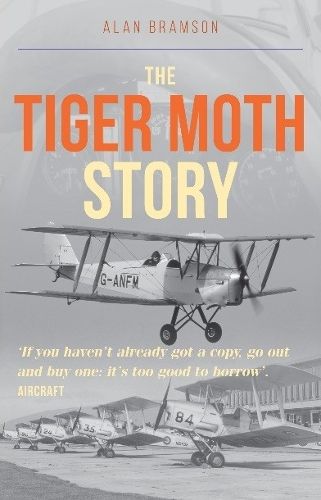Readings Newsletter
Become a Readings Member to make your shopping experience even easier.
Sign in or sign up for free!
You’re not far away from qualifying for FREE standard shipping within Australia
You’ve qualified for FREE standard shipping within Australia
The cart is loading…






The Tiger Moth is one of the major aviation success stories in the history of British aviation. Developed by Geoffrey de Havilland and flown for the first time on October 26 1931, the biplane became the most important elementary trainer used by Commonwealth forces. More than 1,000 Tiger Moths were delivered before WWII, and subsequently around 4,000 were built in the UK with an extra 2,000 being manufactured in Canada, Australia and New Zealand. Following the end of WWII, pilots could buy and modify a Tiger Moth for recreational use or agricultural crop spraying and use it relatively cheaply. This, combined with its popularity within the aero club movement, provided employment for the Tiger Moths until the late fifties when the more modern closed cockpit aircraft began to force them into retirement. This new paperback edition provides a comprehensive account of the aircraft origins and its development as a trainer of Commonwealth pilots in times of peace and war. It also looks at some of the other roles which this versatile little aeroplane performed such as a crop duster, glider tug, aerial advertiser, bomber, coastal patrol plane and aerial ambulance. Technical narrative and drawings, handling ability and performance as seen through the eyes of the pilots to make The Tiger Moth Story the most comprehensive book of the aircraft.
$9.00 standard shipping within Australia
FREE standard shipping within Australia for orders over $100.00
Express & International shipping calculated at checkout
The Tiger Moth is one of the major aviation success stories in the history of British aviation. Developed by Geoffrey de Havilland and flown for the first time on October 26 1931, the biplane became the most important elementary trainer used by Commonwealth forces. More than 1,000 Tiger Moths were delivered before WWII, and subsequently around 4,000 were built in the UK with an extra 2,000 being manufactured in Canada, Australia and New Zealand. Following the end of WWII, pilots could buy and modify a Tiger Moth for recreational use or agricultural crop spraying and use it relatively cheaply. This, combined with its popularity within the aero club movement, provided employment for the Tiger Moths until the late fifties when the more modern closed cockpit aircraft began to force them into retirement. This new paperback edition provides a comprehensive account of the aircraft origins and its development as a trainer of Commonwealth pilots in times of peace and war. It also looks at some of the other roles which this versatile little aeroplane performed such as a crop duster, glider tug, aerial advertiser, bomber, coastal patrol plane and aerial ambulance. Technical narrative and drawings, handling ability and performance as seen through the eyes of the pilots to make The Tiger Moth Story the most comprehensive book of the aircraft.